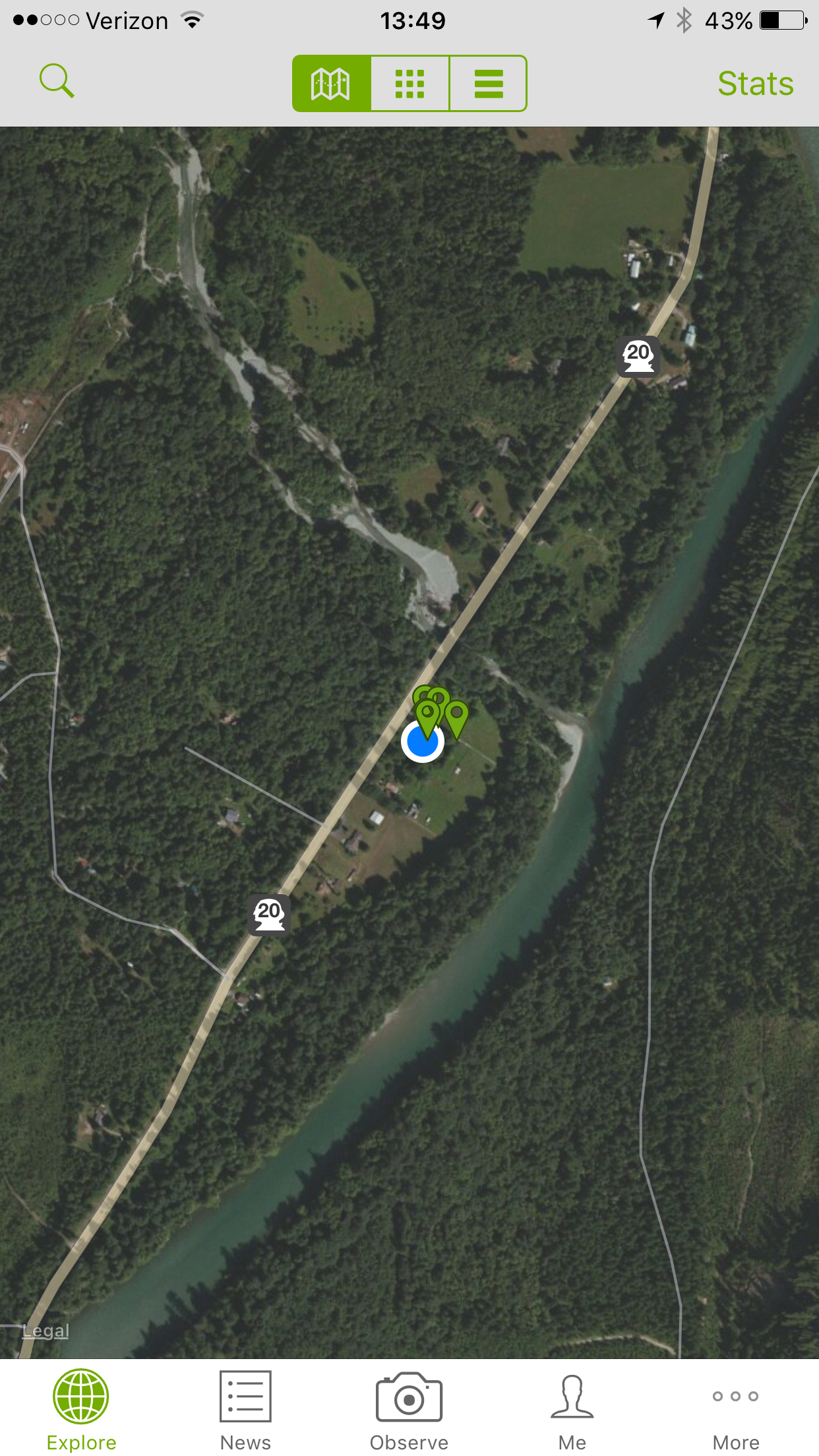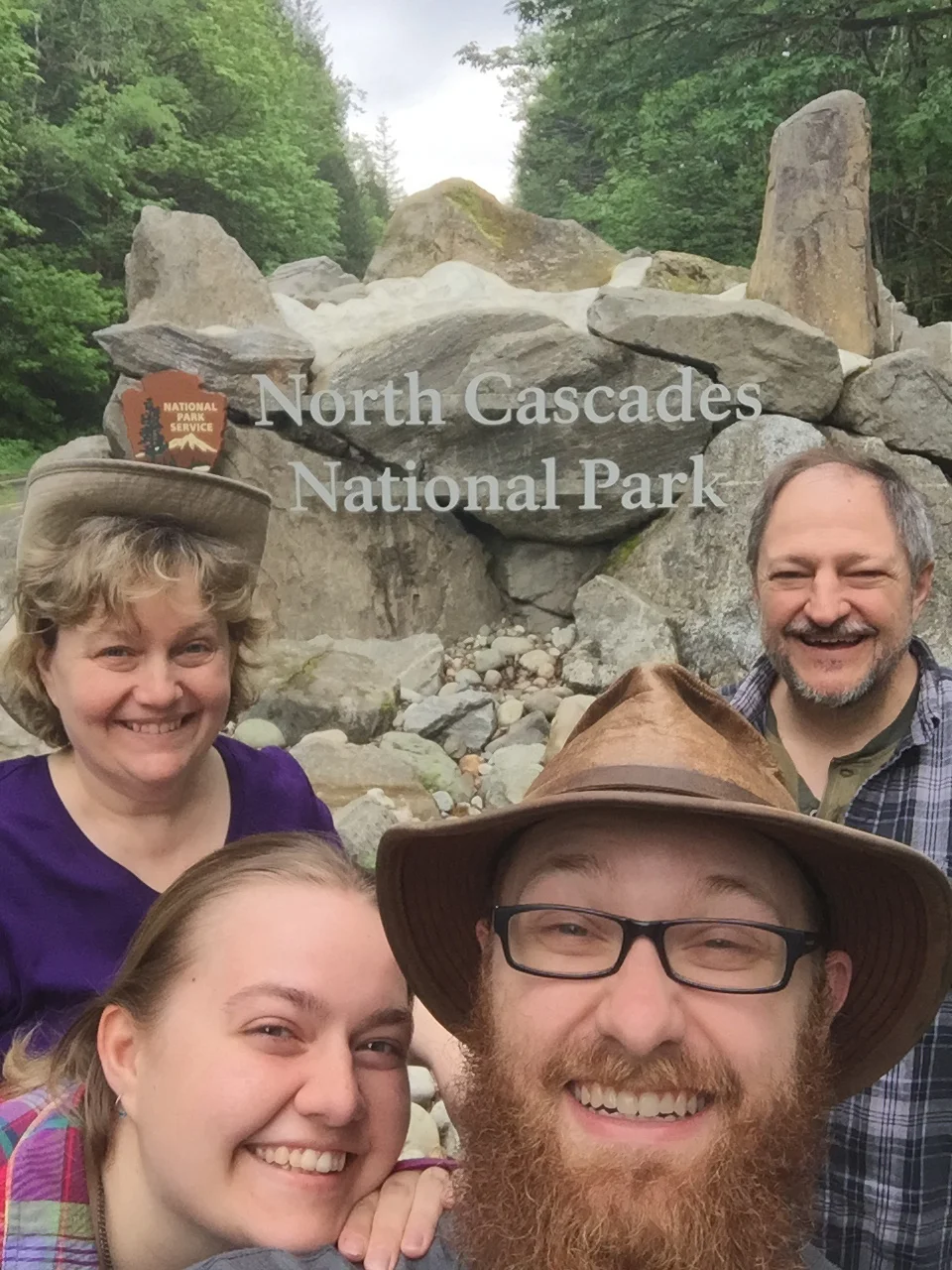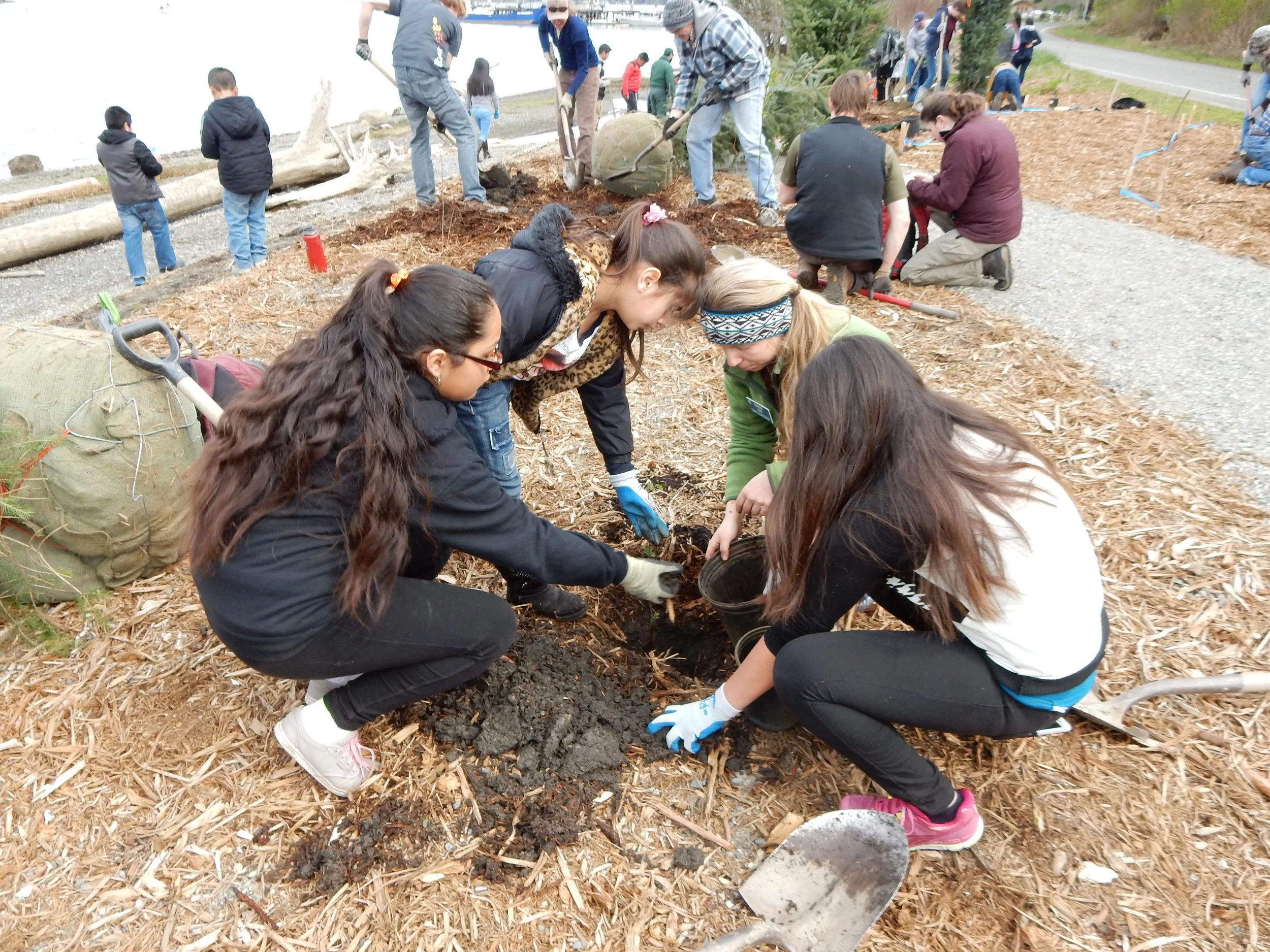A lot of people ask me what it is actually like to live in the North Cascades ecosystem during my graduate residency. While I could offer my journals, papers, observations, and all of the books I have read, my residency is best shown through these seven pictures:
Heare: A Philosophy of Environmental Eduation
Snakes, Amphibians and a whole lot of learning!
Editor’s Note: Do not attempt to capture any wildlife, especially snakes. This class was done with trained professionals who kept all participants safe with decades of experience.
As a graduate student at the North Cascades Institute, most of my experience in environmental education over the past year has been teaching fifth graders inMountain School and graduate natural history retreat classes. Earlier this month I got to experience a whole new side to environmental education at the institute:adult field classes.
Designed to get students of all ages (10-110) into the outdoors, these excursions happen all over the greater North Cascades bio-region. On Mother’s Day I went over to the Methow Valley to help John Rohrer and Scott Fitkin, district biologists, with the Snakes and Amphibians of the Methow Valley class.
iNaturalist: Preparing for the Bioblitz
Are your candles ready? Because this summer the National Park Service turns 100!Instead of gettingAmerica’s best idea a birthday cake or a gift card, they want only one thing for this special occasion: to get all citizens involved with America’s outdoors. One of the easiest ways to get involved is through their BioBlitz:
A BioBlitz is a 24-hour event in which teams of volunteer scientists, families, students, teachers, and other community members work together to find and identify as many species of plants, animals, microbes, fungi, and other organisms as possible. In 2016, BioBlitz goes national. The cornerstone National Parks BioBlitz: Washington, D.C. will take place May 20-21, with more than a hundred concurrent BioBlitzes happening at national parks across the county. -National Park Service
Cascadian Farm: It all started in the Skagit!
While shopping around your local grocery store, you might have seen projects in the organic section with the brand title “Cascaidan Farm Organic: Founded in the Skagit Valley, WA since 1972.” The products can be found in stores nation wide. Last week, however, I took a bicycling adventure to the Roadside Stand of the farm. It serves not only as a great place to get snacks on a long road trip, but also serves as an environmental education tool in the valley.
I’ll let them tell their founding story:
The story of Cascadian Farm begins with the story of our founder, Gene Kahn. 40 years ago, Gene was an idealistic 24-year old grad-school dropout from Chicago, who just wanted to make a difference in the world. He recognized the delicate balance between nature and humans. Inspired by reading “Silent Spring” and “Diet For A Small Planet”, Gene wanted to go back to the land and farm in a way that would not harm the natural beauty of the earth or her inhabitants. So he set out to farm organically on a little stretch of land next to the Skagit River in the Cascade Mountains of Washington. –Cascadian Farm
Creating Tradition: Sixth Annual Migratory Bird Festival
Any cool event can happen once. Maybe twice. After so many years the “just a cool idea” starts to be folded into the fabric of a community. Hosted by the U.S. Forest Service at Ebey’s Landing National Historical Park with support from all the following partners, the Migratory Bird Festival is becoming one of the newest traditions in the Northwest Region.
Partners of the Migratory Bird Festival
• National Park Service
• International District Housing Alliance
• Mount Vernon Police Department
• Catholic Housing Services of Western Washington
• North Cascades Institute
Three groups of learners ranging in ages of 5 to 85 descended on Fort Casey at Ebey’s Landing National Reserve near Coupleville, WA for two days of learning, service and fun on April 30, 2016.
Sharing Home: Three days of adventure in Washington
Having moved into the North Cascades Eco-region in July for the graduate residency program, these mountains are finally starting to feel like home. Month after month I have been engaged in the cycle of the seasons, the habits of natural neighbors and the rhythms of the Skagit. So when I knew my family was coming for only a three day visit, I panicked. How can I show them all that I have learned about this amazing place in only three days? I couldn’t, and I didn’t, but we crammed as much as we could and went to four main locations for an amazing adventure: around theEnvironmental Learning Center, the Methow Valley, theSalish Sea and the City of Seattle.
While my family feels at home in the outdoors, Washington is a completely different beast than our wilderness. Coming all the way from Pittsburgh, PA my parents (Kurt and Pam) and older sister (Abby) reminded me of my general first reaction when I arrived: “Washington is just like Pennsylvania, except exaggerated. The mountains are higher, the rivers purer and the trees much, much taller.” My mother even remarked that it was as if I was living in a fairy tale, the scenery taken right out of a book.
Our first stop on this fairy tale adventure was a place I don’t even notice anymore. On my daily commute to work I drive past the Gorge Creek Falls, an amazing 242 ft. cascade. Since I see it every day, it fell into the backdrop of the commute. Only when my family was seeing it with new eyes, did I stop and remember how beautiful of a place I get to study in.
Where the Powerlines Start
Bumper to bumper traffic on I-5 provides the perfect thinking spot. Usually this is the place where my mind starts to wonder things like “Why does traffic happen” and “When will they make flying cars?” The most recent time I was fortunate enough to be stuck, however, my mind drifted over to the powerlines beside the road. More electrons than I could count were wizzing past, heading into homes, phones and even some cars. The hyper-speedways of electricity, we only see powerlines in the transportation or end state. But they have to start somewhere, right?
My quest to see the start of the powerlines had me heading east on Washington State Route 20. If you wish to pursue this adventure yourself be warned: there is not cell phone reception and most importantly no traffic. Heading east along SR 20 will take you past the towns of Sedro-Woolley, Concrete and Rockport. Make sure you fuel up in Marblemount though as it is the last place for gas before heading into the park.
Martens in the Compost Shed!?
The North Cascade’s Institute prides itself on being a “wildlife wise” campus at the Environmental Learning Center. We want to make sure that none of our natural neighbors are eating any human produced food so that they maintain their “wildness” and are not relying on humans for survival.
We do this through leaving no crumbs on any backpacking trip, keeping all food behind closed doors and composting our food in a large, concrete building under lock and key. What happens, then, when two martens are found running around the compost shed?!
Growing Minds: Tree Planting at Cornet Bay with the Kulshan Creek Neighborhood Program
Environmental Education has the unique opportunity to bring people and organizations together in the most radical places on this planet. Last month, myself and three other members of the current graduate cohort at the North Cascades Institute hopped on a bus full of students, chaperons, a police officer and National Forest employees as part of the Kulshan Creek Neighborhood Program.











